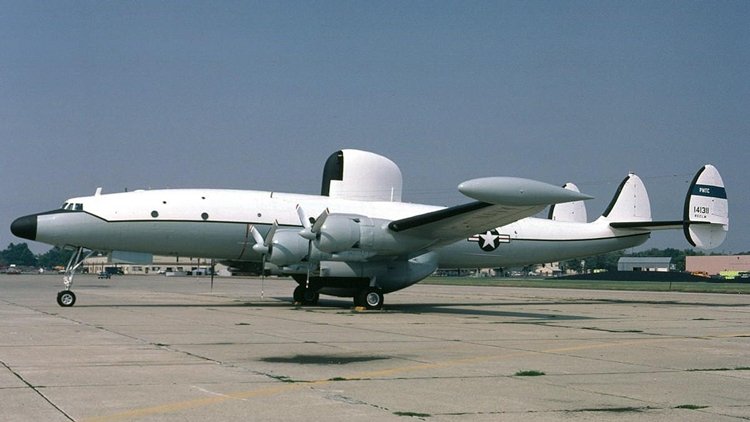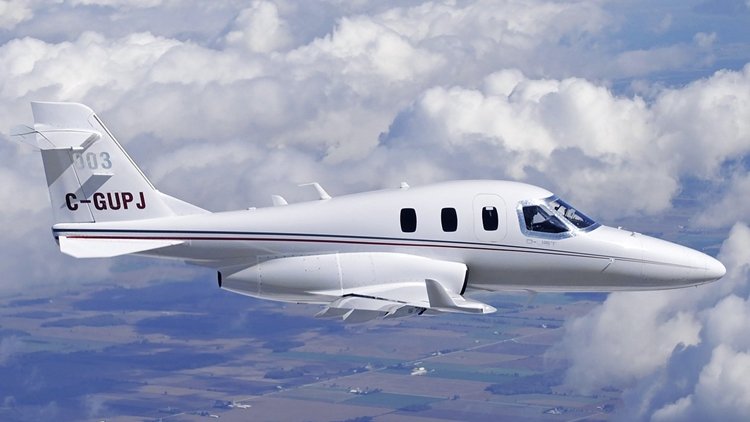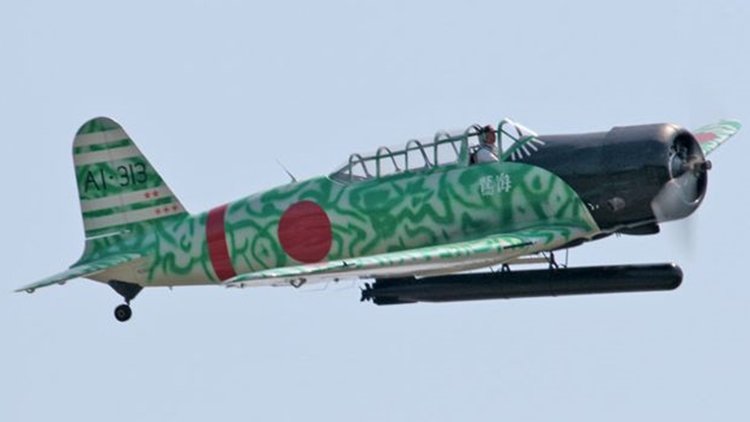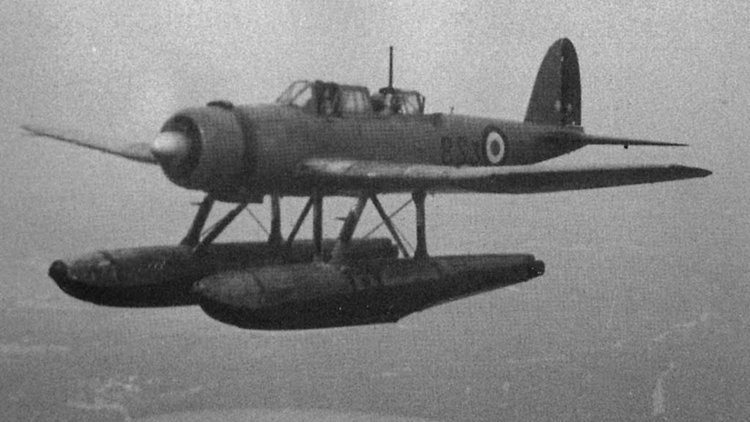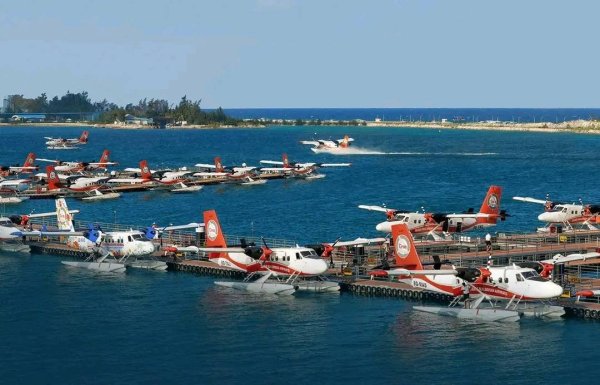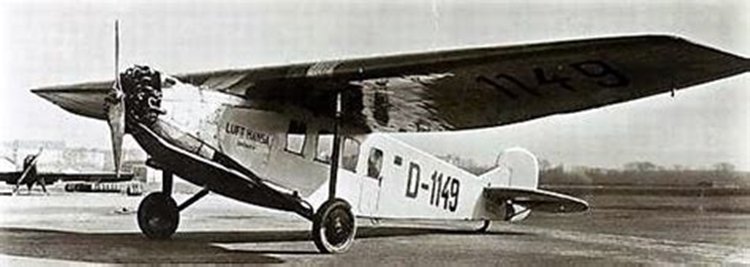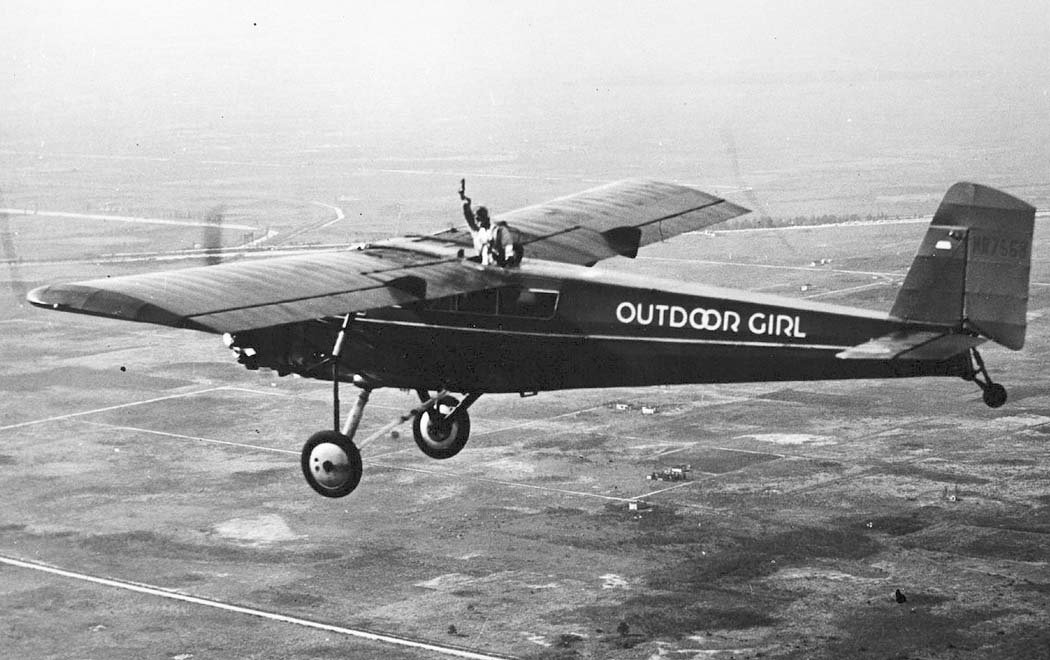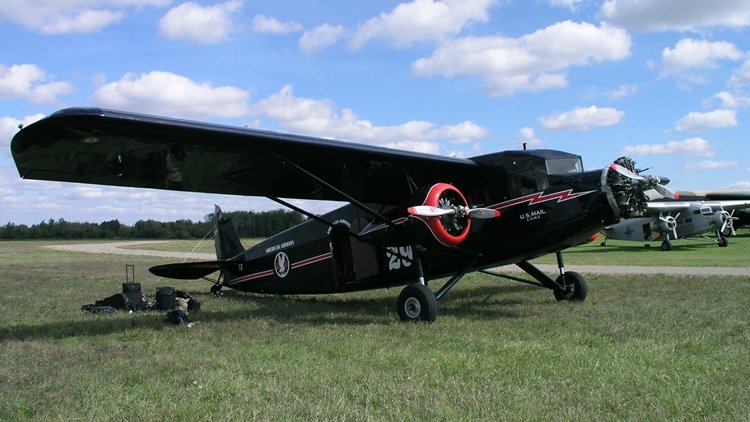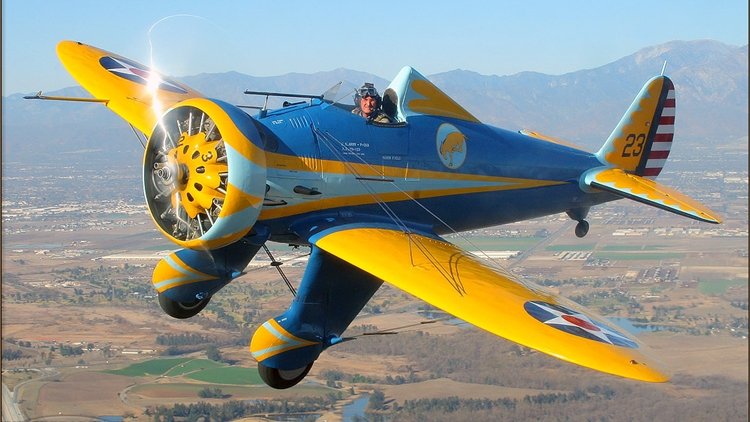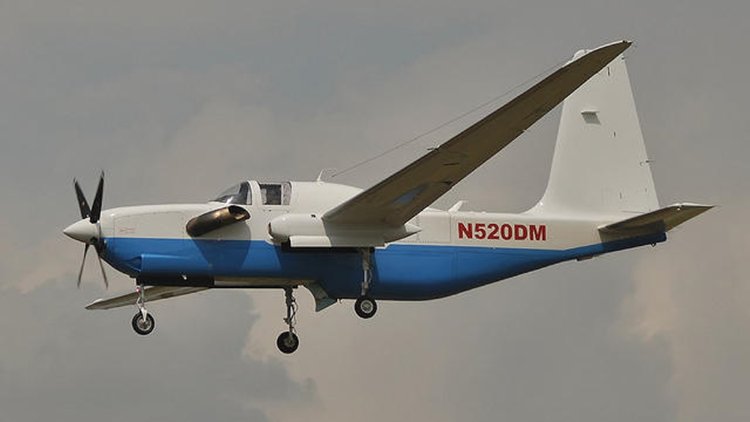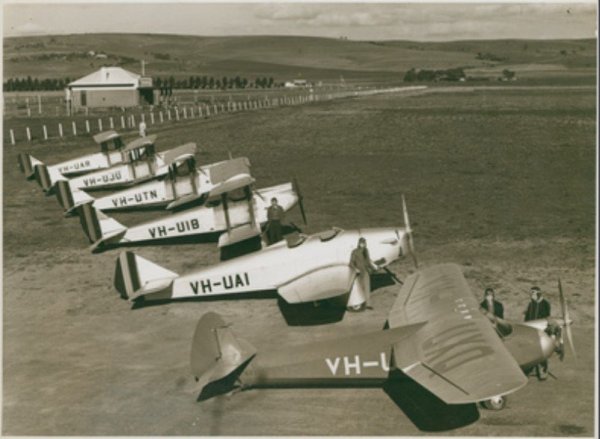-
Posts
7,574 -
Joined
-
Last visited
-
Days Won
67
Content Type
Profiles
Forums
Gallery
Downloads
Blogs
Events
Store
Aircraft
Resources
Tutorials
Articles
Classifieds
Movies
Books
Community Map
Quizzes
Videos Directory
Everything posted by red750
-
The Lockheed EC-121 Warning Star was an American airborne early warning and control radar surveillance aircraft operational in the 1950s in both the United States Navy (USN) and United States Air Force (USAF). The military version of the Lockheed L-1049 Super Constellation was used to serve as an airborne early warning system to supplement the Distant Early Warning Line, using two large radomes (a vertical dome above and a horizontal one below the fuselage). It replaced the TBM-3W used by the USN. Some EC-121s were also used for signal intelligence gathering. The EC-121 was introduced in 1954 and phased out in 1978, although a single specially modified EW aircraft remained in USN service until 1982. The USN versions when initially procured were designated WV-1 (PO-1W), WV-2, and WV-3. The USAF Warning Stars served during the Vietnam War both as electronic sensor monitors and as a forerunner to the Boeing E-3 Sentry AWACS. USAF aircrews adopted its civil nickname, "Connie" (diminutive of Constellation) as reference, USN aircrews used the nickname "Willie Victor". For details of development, operational history and variants, click here.
-

Bankstown Airport - Is it all Doom and Gloom?
red750 replied to Ben's topic in AUS/NZ General Discussion
re my post on 27 Oct 23, I repeated the visit to both Lilydale and Coldsteam today, as it was Saturday and I thought there might e a bit more activity. At Lilydale, a helicopter approached as I was nearing the airport, and when I arrived, it was refuelling. Left shortly after. There were a few people around the skydiving hanger, but nobody but the female receptionist at the flying school. A Beech 36 and a Warrior taxied out and took off, and the Skydive Cessna Caravan refuelled and taxied back to the hhangar. No other activity while I as there. Next I went to Coldstream where there were four aircraft parked, two near the flying school, and two more down the other end of the field. Mine was the only car at the airfield. Someone came out of the flying school and started one of the aircraft, a Tecnam. He taxied down and circled the two aircraft at the other end of the fileld then back to the school. He cut the engine and rolled about ten metres with the engine dead. It rolled to a stop and he hopped out and went back into the school building. Another uninspiring day. -
The Diamond D-JET is a composite, five-seat, single-engine very light jet developed by Austrian aircraft manufacturer Diamond Aircraft Industries. The intended cost for the aircraft was advertised by the company as being US$1.89 million dollars in March 2009. Development of the D-JET has been disrupted by funding shortfalls during the Great Recession. By February 2013, the development program had been suspended pending company reorganization, which included the workforce related to the D-JET being laid off. During May 2014, Diamond confirmed the continued suspension of the programme, but stated that it had not been cancelled. During December 2016, a majority share of Diamond Aircraft Canada was sold to Chinese firm Wanfeng Aviation; reportedly, this shall result in a detailed re-assessment of the D-JET program, including options for the potential resumption of its development. The Diamond D-JET is a very light jet aircraft, seating up to five personnel and powered by a single engine. A key attribute of the design was its high level of stability during flight, which was reportedly present through its full envelope even during challenging manoeuvres. As a result of its clean exterior design, the D-JET possesses relatively low drag, enabling the aircraft to glide in excess of 65 miles from its 25,000-foot ceiling altitude. The cabin of the D-JET was intended to feature various design elements to enhance onboard comfort, such as the proposed seating layout and the low vibration levels present during flight, for both passengers and crew. The center cockpit pedestal is cantilevered to ease entrance and egress in comparison to some competitors. Separated baggage compartments are located within the interior of the aircraft's nose and to the aft of the main cabin, both of which being externally accessed. The D-JET is powered by a single Williams FJ33-4A turbofan engine, which is equipped with an electronically controlled full-authority digital engine control (FADEC) system. Various functions, such as engine startup and over-speed selection prevention, have been automated and are seamlessly performed by the FADEC system. For redundancy, the dual-channel FADEC system uses four independent electrical power sources in addition to battery backup. Diamond opted to adopt a centerline location for the engine, air for which is fed through inlets embedded into the wing roots. The central location of the engine places makes it close to the center of gravity of the D-JET, reducing pitch forces, however, there are some drawbacks to this approach, including elevated air losses within the ducting arrangement used and a greater likelihood of foreign object ingestion. According to aviation publication Flying Magazine, the controls of D-Jet "feel completely natural...stability is excellent, and I found the workload to be very low". Akin to most jet aircraft, possessing a wide range between minimum and maximum airspeeds, the D-Jet has a larger pitch trim range than a piston-engined counterpart, thus use of the trim control through the takeoff and landing procedures is necessitated to a greater degree than propeller-driven aircraft. The D-Jet is outfitted with relatively large slotted flaps, which were reportedly crucial to achieve the 61-knot maximum stall speed certification required by any single-engine aircraft. These flaps, which resulted in no meaningful pitch changes during retraction or extension, were designed to ease their usage. The avionics of the D-JET comprise a Garmin G1000 glass cockpit, the large multi-function display of which taking center-place on the cockpit dashboard, akin to aircraft such as the Citation Mustang. For de-icing purposes, Diamond opted for pneumatic boots on the wing's leading edges, bleed air for heating the inlets and ducts, and electric heating for the windshields and probes; in particular, Goodrich developed a considerably thinner de-icing system for the D-JET. The landing gear is electrically-actuated on later-built prototypes; atypically, the landing gear is designed to be used as an air brake during landing approaches, being deployable at speeds as high as 200 knots. Maneuvering on the ground was achieved via a nosewheel steering system, actuated via a mechanical linkage to the pedals. According to Diamond, the D-JET could be operated from 3,000-foot runways, assuming that they are both dry and uncontaminated. For details of development, click here.
-
That info as copied direct from the manufacturer's website. https://www.flypyka.com/pelican-cargo
-
The Nakajima B6N Tenzan (Japanese: 中島 B6N 天山, "Heavenly Mountain", Allied reporting name: "Jill") was the Imperial Japanese Navy's standard carrier-borne torpedo bomber during the final years of World War II and the successor to the B5N "Kate". Due to its protracted development, a shortage of experienced pilots and the United States Navy's achievement of air superiority by the time of its introduction, the B6N was never able to fully demonstrate its combat potential. The B5N carrier torpedo-bomber's weaknesses had shown themselves early in the Second Sino-Japanese War and, as well as updating that aircraft, the Imperial Japanese Navy began seeking a faster longer-ranged replacement. In December 1939 it issued a specification to Nakajima for a Navy Experimental 14-Shi Carrier Attack Aircraft capable of carrying the same external weapons load as the B5N. The new plane was to carry a crew of three (pilot, navigator/bombardier and radio operator/gunner) and be of low wing, cantilevered, all-metal construction (though control surfaces were fabric-covered). Further requirements included a top speed of 250 knots (460 km/h; 290 mph), a cruising speed of 200 knots (370 km/h; 230 mph) and a range of 1,000 nmi (1,900 km; 1,200 mi) with an 800 kg (1,800 lb) bomb load or 2,072 nmi (3,837 km; 2,384 mi) without external armament. The Navy had requested installation of the proven Mitsubishi Kasei engine as the B6N's powerplant but Engineer Kenichi Matsumara insisted on using Nakajima's new 1,870 hp (1,390 kW) Mamoru 11 14-cylinder air-cooled radial due to its lower fuel consumption and greater adaptability. This became an unfortunate choice as the Mamoru engine was plagued with mechanical defects and never achieved its expected power rating. Constrained by the standard-sized aircraft elevators then in use on most Japanese carriers, designer Matsumara was obliged to use a wing similar in span and area as that of the B5N and to limit the aircraft's overall length to 11 m (36 ft). This latter restriction accounted for the B6N's distinctive swept-forward tail fin and rudder. The outer wing panels folded upward hydraulically, reducing the B6N's overall span from 14.9 m (49 ft) to approximately 6.3 m (21 ft) for minimal carrier stowage. In order to lessen increased wingloading due to the heavier powerplant, Fowler flaps were installed which could be extended beyond the wing's trailing edge. These were normally lowered to an angle of 20 degrees during take-off and 38 degrees when landing. Despite the use of these flaps, however, the B6N had a much higher stall speed than its predecessor. The prototype B6N1 made its maiden flight on 14 March 1941. Following continued testing, however, several problems became evident. In particular, the aircraft exhibited an alarming tendency to roll while in flight, the cause of which was traced to the extreme torque developed by the four-bladed propeller. To compensate, the aircraft's tail fin was thinned down and moved 2 degrees ten minutes to port. This modification greatly improved the plane's handling characteristics. A total of 1268 units were built. For more details of design annd developmennt, and operational history annd variants, click here.
-
The Aichi E13A (Allied reporting name: "Jake") was a long-range reconnaissance seaplane used by the Imperial Japanese Navy (IJN) from 1941 to 1945. Numerically the most important floatplane of the IJN, it could carry a crew of three and a bombload of 250 kg (550 lb). The Navy designation was "Navy Type Zero Reconnaissance Seaplane". In China, it operated from seaplane tenders and cruisers. Later, it was used as a scout for the Attack on Pearl Harbor, and was encountered in combat by the United States Navy during the Battles of Coral Sea and Midway. It was in service throughout the conflict, for coastal patrols, strikes against navigation, liaison, officer transports, castaway rescues, and other missions, along with some kamikaze missions in the last days of war. It also served on the super battleships Yamato and Musashi as catapult launched reconnaissance aircraft. One Aichi E13A was operated by Nazi Germany alongside two Arado Ar 196s out of the base at Penang. The three aircraft formed the East Asia Naval Special Service to assist the German Monsun Gruppe as well as local Japanese naval operations. Eight examples were operated by the French Navy Air Force during the First Indochina War from 1945 until 1947 while others were believed to be operated by the Naval Air Arm of the Royal Thai Navy before the war. One example (MSN 4326) was surrendered to New Zealand forces after the end of hostilities and was flown briefly by RNZAF personnel, but was not repaired after a float was damaged and subsequently sank at its moorings in Jacquinot Bay. Variants E13A1 Prototypes and first production model, later designated Model 11.[4] E13A1-K Trainer version with dual controls E13A1a Redesigned floats, improved radio equipment E13A1a-S Night-flying conversion E13A1b As E13A1a, with Air-Surface radar E13A1b-S Night-flying conversion of above E13A1c Anti-surface vessel version equipped with two downward-firing belly-mounted 20 mm Type 99 Mark II cannons in addition to bombs or depth charges.
-
Performance & Capacity Cruise Speed 60 - 70 knots / 111 - 130 km/h / 30 - 36 m/s Stall with flaps 35 knots / 65 km/h / 18 m/s Landing Speed 45 knots / 83 km/h / 23 m/s Climb Rate 1,200 ft per minute / 365 m per minute Maximum Payload 400 lbs / 181 kg Cargo Volume 70 ft3 / 1.98 m3
-
Oakland, CA, January 30, 2023— Pyka, the global leader in autonomous electric aviation technology, today unveiled the latest addition to its fleet of purpose-built industrial aircraft; the Pelican Cargo. Featuring unprecedented payload and range capabilities, Pelican Cargo is the world’s largest zero-emission cargo airplane and the first autonomous vehicle of its class. With a range of up to 200 miles, a payload of up to 400 pounds in 66 cubic feet of cargo volume and a nose-loading system with a sliding cargo tray, the Pelican Cargo platform will enhance express logistics networks, enable connectivity of remote rural communities, and ensure fast and reliable access to vital goods and supplies for areas in need.
-
The de Havilland C.24 was a two-seat autogyro built by de Havilland at its Stag Lane works in England in 1931. The C.24 was built in 1931 using a Cierva rotor head coupled to the cabin of a de Havilland DH.80A Puss Moth, and driven by a 120 hp Gipsy III engine. It was withdrawn from use by December 1934. A single example (G-ABLM) was produced and is part of the Science Museum collection. In 1932, it was redesignated C.26 (not to be confused with the unbuilt C.26 twin-engine autogiro design) when a two-blade rotor system was installed. Since 2008 it has been on loan to the de Havilland Aircraft Museum at Salisbury Hall, near London Colney in Hertfordshire. In flight, it had a maximum speed of about 115 mph (185 km/h; 100 kn).
-
The Focke-Wulf A 38 Möwe (German: "Gull") was an airliner, produced in Germany in the early 1930s. It was a final development of the family of designs that commenced with the A 17 in 1927. The A 38 used the same high-mounted, cantilever wing as the A 29, but mated this to an all-new fuselage design with enclosed seating for ten passengers and three crew. Unlike earlier members of the family, the flight deck was not joined to the cabin, separated now by a lavatory and baggage compartment. The main undercarriage was strengthened and the mainwheels fitted with brakes, while the tailskid was replaced with a tailwheel. All four A 38s were originally fitted with Siemens- or Gnome et Rhône-built Bristol Jupiter engines (although the BMW VI had been offered as an option), but in April 1933, all aircraft were refitted with Siemens Sh 20 powerplants. By mid-1934, they had been relegated to training duties.
-
The Curtiss/Curtiss-Robertson Model 56 Thrush was a 1929 six passenger high-wing fixed undercarriage single-engine cabin monoplane airliner and utility transport powered by either a Curtiss Challenger or a Wright Whirlwind radial engine and built as an enlargement of the earlier Curtiss Robin. Several were used for record breaking endurance flights by female pilots during the early 1930s including one in which the aircraft stayed aloft for almost ten days. Three 170 hp (130 kW) Curtiss Challenger-engined Curtiss Thrush prototypes (serialled G-1 to G-3) were built at Curtiss' Garden City factory, but these were underpowered and production examples, redesignated Thrush J (serialled 1001 to 1010) with 225 hp (168 kW) Wright Whirlwind engines, were built at the Curtiss-Robertson St Louis factory. All three prototypes were later re-engined with Whirlwinds to make them Thrush Js. The fuselage of the Thrush formed the basis for the twin-engine Curtiss Kingbird which was developed roughly in parallel. The fuselage was built up as a Pratt truss frame formed mainly from Duraluminum tubing and fittings with welded Chrome-moly tubing reinforcing highly stressed areas and covered in fabric. The wing was a fabric covered semi-cantilever braced with steel tube struts, and had solid spruce spars and stamped Alclad ribs with Alclad sheet wrapped over leading edge. A fuel tank is mounted within each wing near the root. Rudder and elevators were welded chrome-moly steel tubing. 116" track undercarriage is fitted with oleo-pneumatic shock obsorbers and Bendix brakes, and is braced to the front struts and lower longerons. Noumber built: 13. Variants Thrush (ATC 159 & 160) - prototypes powered by 170 hp Curtiss Challenger, three built, all converted to Thrush J (ATC 236). Thrush J (ATC 261) - main production variant with 225 hp Wright J-6-7 Whirlwind, 10 built. Thrush Special - one converted from a Thrush J with 240 hp Wright J-6-7 Whirlwind. and a second converted with Wright J-5.
-
The Stinson SM-6000 Airliner was a 1930s three-engined (trimotor) ten-passenger airliner designed and built by the Stinson Aircraft Corporation. The SM-6000 was a high-wing braced monoplane with room for a pilot and a cabin for ten passengers. It was powered by three 215 hp (160 kW) Lycoming R-680 engines strut-mounted one each side above the main landing gear units and one in the nose. A number of variants were built mainly with improved interiors. In 1932 the Model U Airliner was produced which had low-set stub wings with an engine mounted at each wingtip. Variants Corman 6000 The initial prototypes produced by the Corman aircraft Co. as part of the E L Cord empire. SM-6000 Airliner 1930 initial production variant with three 215hp (160kW) Lycoming R-680 engines. 53 built. SM-6000-A Airliner 1930 variant available with different interior configurations. SM-6000-B1 Airliner 1931 all-passenger variant with better interior equipment. SM-6000-B2 Airliner As the B1 but with a mixed mail/passenger interior. Model U Airliner 1932 improved model with three 240hp (179kW) Lycoming R-680-BA engines on stub wings. 24 built. C-91 United States military designation for one SM-6000-A (s/n 42-79547) impressed into service in 1942.
-
The Boeing P-26 "Peashooter" was the first American production all-metal fighter aircraft and the first pursuit monoplane to enter squadron service with the United States Army Air Corps. Designed and built by Boeing, the prototype first flew in 1932, and the type was still in use with the U.S. Army Air Corps as late as 1941 in the Philippines. There are two surviving Peashooters, but there are three reproductions on display with two more under construction. The project, funded by Boeing, to produce the Boeing Model 248 began in September 1931, with the US Army Air Corps supplying the engines and the instruments. The open cockpit, fixed landing gear, externally braced wing design was the last such design procured by the USAAC as a fighter. The Model 248 had a high landing speed, which caused a number of accidents. To remedy this, flaps were fitted to reduce the landing speed. The Army Air Corps ordered three prototypes, designated XP-936, which first flew on 20 March 1932. The Boeing XP-936's headrest offered little protection should it overturn on landing, risking injury to the pilot. As a result, production Model 266s (P-26As) had a taller headrest installed to provide protection. Two fighters were completed as P-26Bs with fuel-injected Pratt & Whitney R-1340-33 engines. These were followed by twenty-three P-26Cs, with carburated R-1340-27s and modified fuel systems. Both the Spanish Air Force (one aircraft) and the Republic of China Air Force (eleven aircraft) ordered examples of the Boeing Model 281, an export version comparable to the P-26C, in 1936. The "Peashooter", as it was known by service pilots, was faster than previous American combat aircraft. Nonetheless, rapid progress in aviation led to it quickly becoming an anachronism, with wire-braced wings, fixed landing gear and an open cockpit. The cantilever-wing Dewoitine D.500 flew the same year as the P-26 and two years afterwards the Soviet I-16 with retractable landing gear was flying. By 1935, just three years after the P-26, the Curtiss P-36, Messerschmitt Bf 109 and Hawker Hurricane were flying, all with enclosed cockpits, retractable landing gear and cantilever wings. However, some P-26s remained in service until after the United States entered World War II in December 1941. Variants XP-936 Model 248, prototypes powered by a 522 hp (389 kW) Pratt & Whitney SR-1340E Wasp radial engine, three built. XP-26 Designation assigned to the three XP-936 aircraft after acquisition by the USAAC on June 15, 1932. Other designations assigned to the aircraft included Y1P-26, XY1P-26, and eventually P-26. P-26A Model 266, first production variant, powered by a 600 hp (450 kW) R-1340-27. Multiple modifications were made during the production run and afterward. 111 built. Surviving aircraft were redesignated RP-26A in October 1942 and then ZP-26A in December. P-26B Model 266A, improved variant powered by a fuel-injected 600 hp (450 kW) R-1340-33. Two built, with 17 more being converted from P-26Cs. P-26C Interim variant with a carbureted R-1340-27 and a modified fuel system. Flaps were factory installed. 23 built. All surviving P-26Cs were modified into P-26B standard in 1936. Model 281 Export version of the P-26C; 11 built for China and one for Spain.
-
Training schools for pilots have warned they cannot afford the cost of shifting their operations to make way for Western Sydney International Airport in 2026, which could put further strain on the already depleted supply of pilots. Aeria Management Group – which operates Camden and Bankstown airports and provides the bulk of pilot training in NSW – has warned the federal Department of Transport that its draft environmental impact statement for the new airport “substantially underestimates” the costs for the existing airports in the congested Sydney Basin. Read story here.
-
The Grob G 520 is a turboprop long-endurance, high-altitude reconnaissance and surveillance aircraft built by Grob Aircraft with short runway capabilities and full approval for all-weather IFR/icing operations according to LBA/FAA Part 23 regulations. Developed and certified in 1991, the Grob G 520 is one of the world's largest fully composite manned aircraft and holder of several world records. Production was resumed in 2014. The Grob G 520 ‘EGRETT’ (former Grob/E-Systems/AlliedSignal Egrett – its name is derived from the three companies involved in its design: E-Systems, Grob Aircraft, and Garrett, the latter firm later changing its name to AlliedSignal) is a surveillance aircraft developed in Germany in the 1980s by an international partnership. It was intended to fill a joint German Air Force – US Air Force requirement for a high-altitude, long-duration surveillance platform for treaty verification and environmental monitoring. Known as "LAPAS" (Luftgestütztes, abstandsfähiges Primär-Aufklärungssystem, engl: airborne, long distance primary reconnaissance system) in Germany and "Senior Guardian" in the US, the program initially attempted to acquire the Lockheed TR-1 (U-2) for this role, but when this did not succeed, a new aircraft was sought. The initial D-450 EGRETT I development aircraft flew in 1987 and established three world records for altitude and time to climb in September 1988: Time to climb to 15,000 metres (49,213 ft): 40 minutes 47 seconds Altitude in horizontal flight: 16,239 metres (53,278 ft) Altitude without payload: 16,329 metres (53,573 ft) Two pre-production machines followed in 1989 and 1990 as the D-500 EGRETT II and then fitted out to the finalized G 520 design in 1991. These latter two aircraft were owned by E-Systems and Grob respectively, and used for promotional purposes: E-Systems' for various sensor packages, and Grob's (renamed the Strato 1) to market the design to civil authorities as a resource management platform. In 1992, the German Air Force placed an order for production of nine EGRETT IIs, to be supplemented by G 520T two-seat trainer and one of the demonstrators. However, in February 1993, before much production had taken place, the process of procurement came under scrutiny when accusations of corruption (Amigo Affair) surrounding the former Bavarian Minister President Max Streibl became public. The program was subsequently cancelled when Eastern Europe ceased to be perceived as a threat. The two-seater-version G 520T was completed and sold to Airborne Research Australia in Adelaide. In 2014, Grob Aircraft repurchased the G 520T and flew it back to Germany. The repainted aircraft will be presented to the public during the Farnborough Airshow 2014, simultaneously as kick-off for resuming the production of the G 520T. It was the first composite aircraft specifically designed for stratospheric research. The G 520 is a fully composite conventional mid-wing monoplane with extremely high aspect ratio wings. Power is provided by a single turboprop Honeywell TPE 331-14F with a 4-blade Hartzell propeller, and it is equipped with a tricycle undercarriage, whose main units retract into fairings on the wings. The flexible payload-bay concept of the G 520 can accommodate multiple mission systems for both civilian and military applications and 12 payload compartments for up to 850 kg of mission equipment make the G 520 an ideal multi-role platform for a wide range of missions. The cockpit of the G 520T provides room for a pilot and a sensor operator as well as for equipment which has to be placed inside the pressurized cabin. The instrument panel can be optionally equipped with a digital glass cockpit IDU-680 EFIS by Genesys Aerosystems. Variants G 520T The G 520T is a two-seater version of the G 520. Initially planned for training and demonstration purposes, the single G 520T built was repurchased by Grob Aircraft in 2014 and transferred to Germany in June 2014. The production of the G 520T will be resumed in 2014. G 520NG The G 520NG will be the revised production version of the initial G 520T. According to company statements during Farnborough Airshow 2014 deliveries can start in 2016.
-
-
You'll have to notify the State Library of S.A., it's their photo, copied fromFacebook. No copyright.
-


